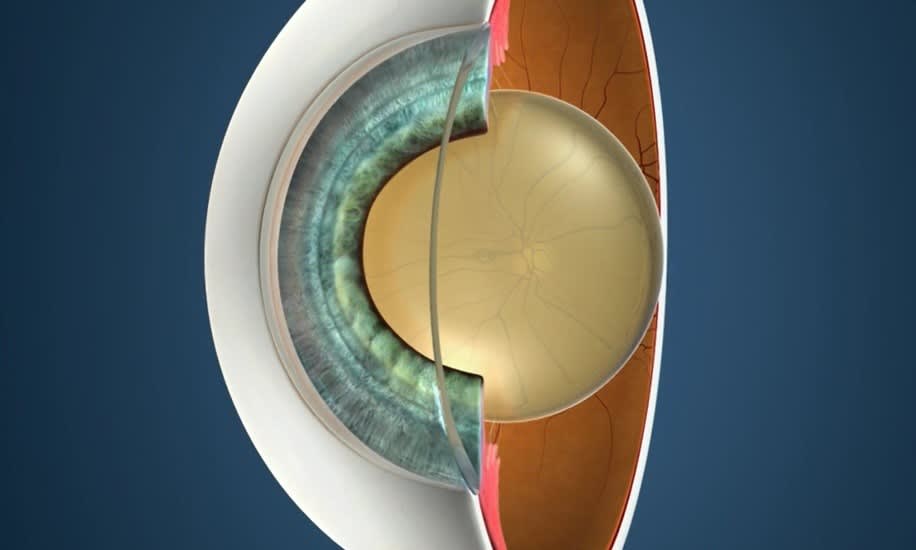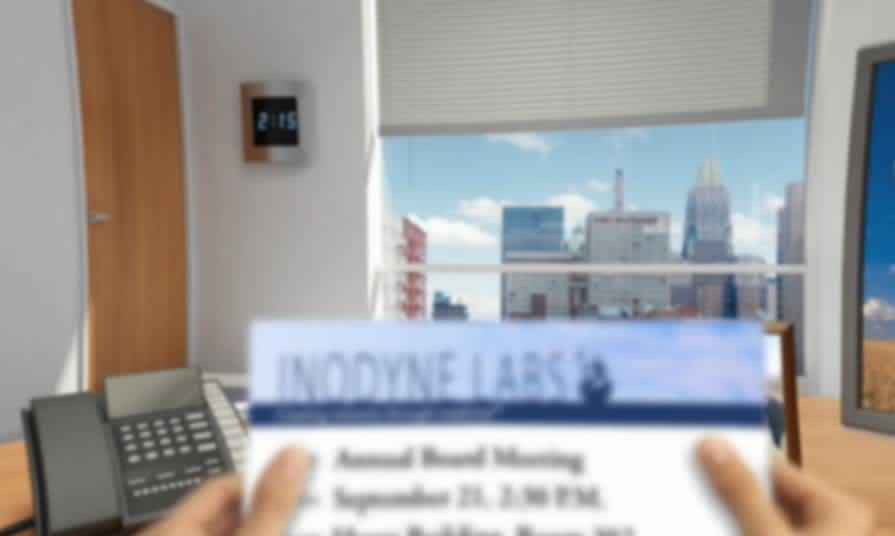How do you decide what type of intraocular lens implant to use for your cataract surgery?
Cataract surgery is the most common surgery that Singaporeans encounter in our adult lives.
In general, as we age, we will all develop cataracts. Yes. Let me repeat that. EVERYONE WILL GET CATARACTS. It’s a matter of how mild or severe the cataract formation is.
Typically, people develop cataracts at around 50 to 70 years of age. However, certain things can cause you to get them at a much younger age:
- Trauma: Any prior injury including a blunt hit to the eye can cause cataracts.
- Excessive sunlight UV exposure.
- Overuse of steroid medication in the forms of oral steroids, nasal steroid sprays or steroid eyedrops.
- a high degree of myopia or short-sightedness.
- Any prior eye laser or eye surgery
This article explains everything you need to know about cataracts and how it's treated in Singapore.
What is defined as a Cataract?

Cloudy Lens
A cataract is formed when the usually clear coloured lens of the eye becomes cloudy with age. As a natural part of ageing, more than 50% of those over 55 years will have some degree of cataract. Some younger patients may also develop cataracts earlier if there is a history of trauma to the eye or as a side effect of certain medications, eg steroids.
Cataract formation blocks light from passing through the crystalline lens, reducing the brightness and clarity of vision and doesn’t allow a clear image to be seen, even with spectacle correction. Once formed, there is no known prevention of cataracts.
Cataracts can develop over a number of years and early cataracts may initially cause little visual symptoms. They usually develop in both eyes, although one eye may be more advanced than the other. You can think of a cataract as frosted rather than clear glass, causing blurred vision.
What are the causes of Cataract in Singapore?
- Age – eventually affects everyone and becomes more common as we get older.
- Family history of cataracts increases your chances of developing.
- Severe trauma, inflammation or previous eye surgery.
- Excessive ultraviolet light (UV) over a long period.
- Oral, topical, or inhaled steroids & radiation treatment.
- Poorly controlled diabetes, smoking and excessive alcohol intake.
What are the symptoms of Cataract?

Your vision can become misty or blurred, or you may have patches where your vision is fogged, even when wearing your glasses. In early, mild cataract cases, vision is blurred when reading fine prints.
In later and more mature cataract cases, vision is also blurred when seeing larger objects in the distance, especially in dim light conditions eg night driving. Common symptoms include:
- difficulty to see in low or very bright light.
- changing refractive error (or an increase in spectacle degree).
- glare from strong lights may be uncomfortable or dazzling.
- colours appear washed out or have a yellowish tint.
- double or shadowy vision.
- glasses no longer correct your vision.
- headlights or street lights appear to have starbursts & halo around.
How are cataracts diagnosed in Singapore??
Full eye examination
Cataracts are often detected during an eye examination with a variety of tests. Your doctor is able to tell how much a cataract may be affecting vision. Usual eye tests include:
- testing visual acuity for distance and reading
- glare sensitivity (does a bright light affect your vision)
- colour vision
- contrast sensitivity (distinguish between shades)
- an international cataract software to diagnose and grade your cataracts
- a complete examination of all other parts of the eye.
A complete eye examination will confirm that the visual loss is due to cataract and exclude other common ageing eye problems, such as diabetes, glaucoma, or age-related macular degeneration (AMD).
Read more about AMD in the Ultimate Guide to Age-related Macular Degeneration (AMD) in Singapore (2020). If you're looking for more information about glaucoma treatment, you may find this article useful!
How do I reduce cataract risk and prevent cataract from worsening?
There are a few lifestyle changes you can take to prevent cataracts from worsening, including wearing UV resistant sunglasses. Some factors that affect cataract development include:
Ultraviolet radiation (UV)
UV can damage proteins in and around your body, which is why wearing sunscreen is important in protecting skin. For your eyes, you can wear UV resistant sunglasses to shield your eyes from this type of radiation.
Amount of Exercise
Exercise improves blood circulation, which means more blood flows to the eyes, leading to more toxins being exchanged between the eye and your blood. The more toxins that are disposed of, the healthier your eye is.
You should aim to get a minimum of 150 minutes of moderate-intensity aerobic exercise or 75 minutes of vigorous exercise a week.
Smoking
In general, smoking affects the body’s ability to heal and repair cell damage by creating more free radicals. Free radicals are cancer-causing and, while your body can kill these free radicals, smoking kills off the chemicals that do so. It also affects blood flow negatively, which leads to more difficulty in removing unwanted toxins.
For the eyes, the link between smoking and cataracts has not been fully established. However, there is research indicating that people who smoke were more likely to have visual impairments.
Alcohol intake
Alcohol intake can increase your chances of developing cataracts slightly. The more you drink, the higher the risk.
Taking certain drugs
While you should never discontinue a drug without a doctor’s guidance, you can check if your medication leads to a higher chance of cataracts. An example is Chlorpromazine, an antipsychotic drug. The risks of discontinuing a drug should be carefully weighed with its benefits.
Don’t worry if discontinuing a drug will prove harmful; you can take other steps to reduce the risks and effects of cataracts.
What are some diseases linked to cataract development?
Some diseases and chronic conditions are linked with a higher risk of cataract development.
Diabetes
Diabetes affects the regulation of blood sugar in your body, meaning that, if untreated, it can lead to too much blood sugar. Your eye lens has the ability to convert glucose, the main form of sugar found in blood, into a different type of sugar named sorbitol.
Excess glucose is then converted to excess sorbitol, which collects in the lens and changes the protein found in them. This pooling leads to the early stages of cataracts, which is clumping. Therefore, it is important to manage your blood sugar as soon as you can.
Obesity
There is a cataract developmental risk associated with obesity. Obesity is defined as a Body-Mass Index (BMI index) of 30 or higher. Researchers suspect that this is because of the high amount of cholesterol in the body.
By following a diet similar to the Mediterranean one and reducing weight, you stand to reduce the amount of cholesterol you’ll have.
Hypertension
The blood vessels in your eye are very small and are easily damaged. Hypertension raises blood pressure for a longer period than usual, which means that there will be more pressure in the eye. This higher pressure can lead to blood vessels bursting, causing blood to pool.
Even if it doesn’t burst, it can lead to higher pressure on your optic nerves. Be sure to take medication that reduces hypertension to maintain eye health and exercise to maintain good blood flow.
Severe Myopia
Being severely short sighted at a young age, whether due to genetic factors or not, leads to a higher risk of developing cataracts. While the reason behind the association is still unknown, some researchers think it has to do with big changes in eye shape caused by myopia. Be warned that severe myopia is also linked to higher risks with cataract surgery.
When should I consider cataract surgery?
When cataracts get in the way of your daily activities and you start to experience difficulty in performing your routine daily tasks such as reading and driving, you should start to consider cataract surgery, which is the only way of treating cataracts. Cataract surgery is an operation used to treat cataracts that are affecting your daily life.
More than 50,000 procedures are carried out in Singapore yearly, making it the most common operation of any speciality performed in the country.
Related: What are the latest advancements in cataract surgery in Singapore?
What happens before the cataract surgery?
Prior to cataract operation, your ophthalmologist will perform a complete eye health examination to check the overall condition of your eyes, determine any risk factors, and exclude any reasons why you should not have surgery.
We measure your glasses prescription, to accurately determine the degree of short-sight, long-sight and astigmatism you have prior to surgery.
Additional measurements called Biometry (a detailed ultrasound scan to measure all the anatomical dimensions, including the length of your eye & corneal topography) are performed in order to choose the IOL power to give you the best possible vision after surgery.

Your surgeon will also discuss the various types of lens implants available prior to your cataract surgery, as well as describing what to expect before, during and after your procedure.

NOVENA Bladeless Cataract Surgery & Eye Specialist Centre with in-house MOH licensed Eye Ambulatory Surgery Centre
Surgery for cataract has been around for more than 100 years and has a strong record of being very effective at restoring vision. Technology has advanced over the years making modern cataract surgery enjoy a 99% success rate in uncomplicated cases.
What happens during a cataract surgery in Singapore?
Cataracts can usually be treated with a routine day case operation where the cloudy lens is removed and is replaced with an artificial intraocular lens implant (IOL).
Once the cloudy lens has been removed, your surgeon inserts a clear specially designed intraocular lens implant, called an IOL, placing it securely into the space created after removal of the cataractous lens. This entire process of exchanging a cloudy lens for a clear IOL takes 20 minutes to complete.
Patients can opt to undergo the procedure under topical anaesthesia, local anaesthesia ( injection given around the lower eyelid area ) or local anaesthesia with intravenous sedation. General anaesthesia ( where the patient is completely unconscious ) is rarely necessary and only applies to special cases, e.g. paediatric cataracts and poor patient cooperation.
Cataract surgical techniques have consistently evolved over the past 50 years to become safer, faster and more precise. Modern patients can choose between a manual technique or a 100% bladeless technique.
Traditional Manual Phaco-emulsification Cataract Surgery
This method using ultrasound and an incisional cut on the cornea has been around for 60 years, and over this time, the size of the corneal incision has come down from around 5.5 mm to half the original size today. All incisions are made manually with knives and sharp instruments inside the eye.
This is followed by ultrasonic energy to cut the whole cataract into small pieces and remove the pieces one by one.
This method is already more than 50 years old and although the incision size is now a lot smaller than before, certain aspects of manual phaco-emulsification are performed with limited precision and still has greater room for human errors to occur, resulting in intraoperative complications.

Manual surgery = Sharp Instruments and Blades
Bladeless Femtosecond Laser cataract surgery
Advances in technology now allow for 100% bladeless cataract surgery where a Femtosecond Laser (CATALYS) replaces the human hand to make the cuts into the eye without any sharp knives or blades, all in less than 60 seconds.
It performs many of the important and most challenging steps in cataract surgery which enables the surgeon to remove the cataract more gently by using much less energy and surgical time inside the eye, thus enabling faster post-op visual recovery for patients.
The biggest advantage of Bladeless Femtosecond (FS) Laser Cataract Surgery is that it allows perfect centration of the intraocular lens implant (IOL) to the centre of the visual axis. 3D optical coherence tomography scans and laser precision create perfectly sized and circular capsule openings for IOLs.
FS laser capsulotomies attain reproducible, uniformly circular and precise diameter compared to manual capsulotomies, improving refractive outcomes of multifocal / EDOF (extended depth of focus ) IOLs and maximising patients’ chances of achieving total spectacle independence.
Also Read: Phacoemulsification vs laser cataract surgery: how to know which method is more suitable for me?

100% Bladeless Laser Cataract surgery machine and procedure
What type of lens implant is suitable for my vision?
Multifocal / Trifocal lens implant
With modern surgery, you have a wide choice for which intra-ocular lens ( IOL ) you would like implanted. Your options though come under two main lens choices, depending on if you would like to minimise the need for reading glasses after surgery:
- Premium Aspheric mono-focal IOLs
- Premium multi-focal IOLs
IOLs that correct short-sight and long-sight are standard mono-focal implants, and there are toric IOLs that correct astigmatism as well.
If you don’t mind wearing glasses after cataract surgery, a monofocal lens implant can be used and both eyes can be set for distance vision. Aspheric IOLs are also known as premium high definition IOLs and can offer excellent aberration-free distance vision. However, you will need reading glasses post-operatively. Reading glasses can be prescribed for you approximately one month after surgery.
If you like the idea of being less dependent on reading glasses after cataract surgery, one way to correct presbyopia and reduce your need for reading glasses is to have your cataract surgeon adjust the power of one eye of your mono-focal IOLs to give you a monovision correction.
This is where your dominant eye would be set for providing distance vision and your non-dominant eye would be set for providing near vision, both without the need for glasses to be worn.
There is a period of adjustment for a patient to get used to the feeling where one eye sees far and the other eye sees near; this period varies between individuals, but is usually anywhere between a few days to a few months.
Another option is to choose one of a variety of advanced Multifocal presbyopia-correcting IOLs to improve your reading vision without sacrificing your distance vision.
Presbyopia-correcting IOLs include bifocal and trifocal IOLs; both types are designed to provide a greater range of vision ( including close-up, intermediate, and distance) after cataract surgery than conventional mono-focal IOLs.
In order to be considered a good candidate for these premium multifocal IOLs, the health of your eye has to be in very good condition and you should not be suffering from eye diseases such as severe dry eyes, corneal scars, glaucoma, macular degeneration and autoimmune disease etc.
Multifocal IOLs can be associated with post-operative glare and halo issues, especially in dim light conditions. These visual disturbances usually spontaneously resolve after a few months as the patient gets used to the lens implant. Multifocal presbyopia-correcting IOLs are only available in certain clinics in Singapore.
Frequently asked questions
How quickly will I see after cataract surgery?
Normally the vision has a soft-focus immediately after surgery. Vision is often good by the following day.
Also read: Is it possible for vision to deteriorate after cataract surgery?
When can I drive after cataract surgery?
Your eye specialist will advise you depending upon your circumstances, with most people driving again after 24 hours.
What is the recovery time for cataract surgery?
This depends upon your occupation and the type of cataract surgery you have undergone.
With micro-incisional cataract surgery, most people with office-based occupations resume work within a day or two. Those who work in a dusty environment may need a few days off work.
With large incisional extra-capsular cataract surgery (ECCE ), in which the corneal incision size is larger than 8 mm and requires sutures for wound closure, patients will need bed rest for a few weeks before they are ready to use their eyes or undergo any form of physical exertion.
These days, ECCE is usually reserved for very dense cataracts in patients who have left the condition untreated for too long.
Mild to moderate cataract cases should mostly be able to undergo micro-incisional cataract surgery, which offers fast visual recovery and a quick return to most normal activities.
What kind of activities are restricted after surgery?
For micro-incisional cataract surgery, patients can bend over, wash, cook, clean, shop and carry out general activities. On the day after surgery, you can take a shower and use a computer. Swimming or water-sports can only be resumed after a month.
Do I still need to wear glasses?
There are many ophthalmologists who use multifocal lens implants during cataract surgery to replace the natural lens that has turned cloudy. In this case, most patients do not need to wear distance glasses after modern cataract surgery if their eyes are otherwise healthy without any other pre-existing eye disease.
Total spectacle freedom is not always 100% guaranteed. For those with a multifocal implant or monovision, glasses may still be required for some prolonged fine-print reading or distance activities, but the majority of tasks can be performed spectacle-free.
How much does Cataract surgery cost in Singapore? Can I claim Medisave for Cataract surgery?
Cataract surgery can range from $2000 per eye for subsidised public hospitals to $6000- $8000 for private hospitals for premium IOLs with Bladeless Cataract techniques.
You can claim from your Medisave account. The maximum amount you can claim ranges between $2450-$3450 per eye depending on what type of operation you need to undergo.
Related: Can I use Medishield and Medisave together for cataract surgery?
Conclusion
If you are lucky to still have your vision, then you can take steps like lifestyle modification and improving risk factors to reduce the severity of cataracts. Suffering through cataracts can be a terrifying experience. Fear of being blind is a common fear among my patients and it’s understandable if you feel the same way.
Luckily, cataract surgery is a very common procedure and there are a wide number of Ophthalmologists who are skilled in this procedure. Technology has also helped us reduce the chances of complications during and after the procedure.
While surgery will still be a scary thought, your safety is paramount and we take every step to take care of your eyes and well-being.
I hope this article has helped clear up any doubts you may have about cataracts. To learn more, read how cataract surgery can change your life.
Click here to find prices for treatment or a consultation with a doctor.
Dr David Goh is a medical director at Novena Bladeless Cataract Surgery & Eye Specialist Centre. He specialises in Bladeless Laser Cataract surgery, simple and complex Glaucoma and general ophthalmology. He spent 20 years in the UK where he completed his Medical studies and basic Eye surgical training in Ophthalmology.
He then completed his Higher Ophthalmology surgical training and Specialist Fellowship at the world renowned Moorfields Eye Hospital, London, before returning to Singapore. He has previously worked in Singapore National Eye Centre ( 2010 – 2017 ) as a consultant in Glaucoma, Cataract and Comprehensive Department.













